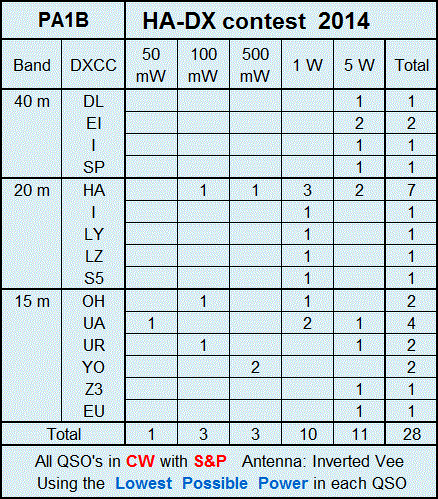
I had great fun with low power in the
HA-DX contest.
I had to rediscover, what my Inverted vee would do.
In earlier contest I experienced, that I would need the full power
on
7 MHz and
3.5 MHz.
From the Cabrillo log:
SOAPBOX: I fixed my Inverted Vee
temporarily after a storm last year
SOAPBOX: One wire is flat on the roof, but I still make QSO's
SOAPBOX: Had great fun with QRPp and QRP from 100 mW to 5 watts
SOAPBOX: Thanks for the activity in the contest
On 14 MHz my antenna is still working well.
In many QSO's on 40 m and 15 m, I had to use the full power of the FT-817.
But when the S-meters goes up, I can reduce the power.
I could also make QSO's with
QRPp.
I had a remarkable QSO with
HG8C.
When I gave my call with
500 mW, there were other stations also calling, but he came back for me.
This doesn't happen often. hi. Most of the time I must wait, till the frequency is clear.
I even had a QSO with
50 mW with
RM22HD outside the contest.






.gif)
.gif)
.gif)